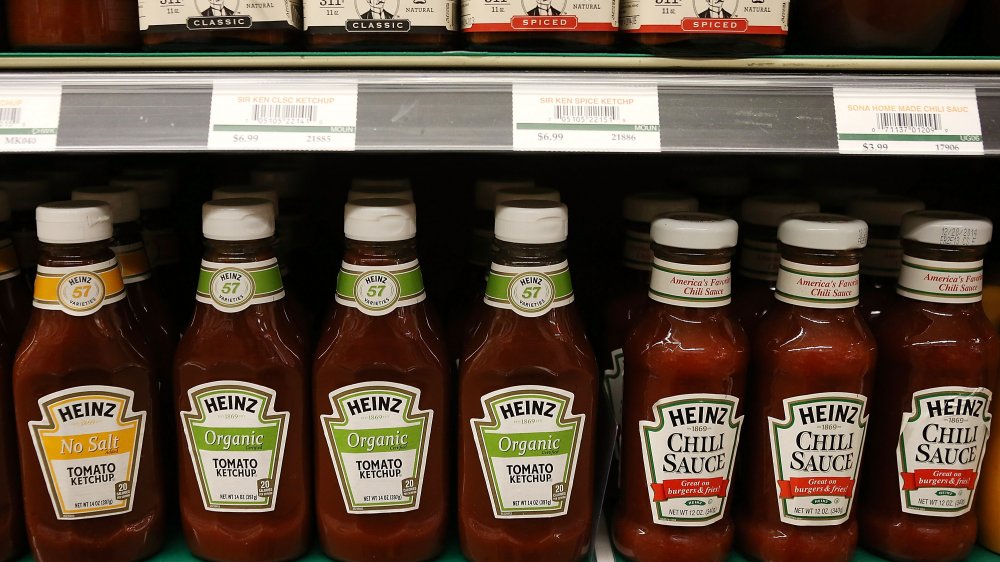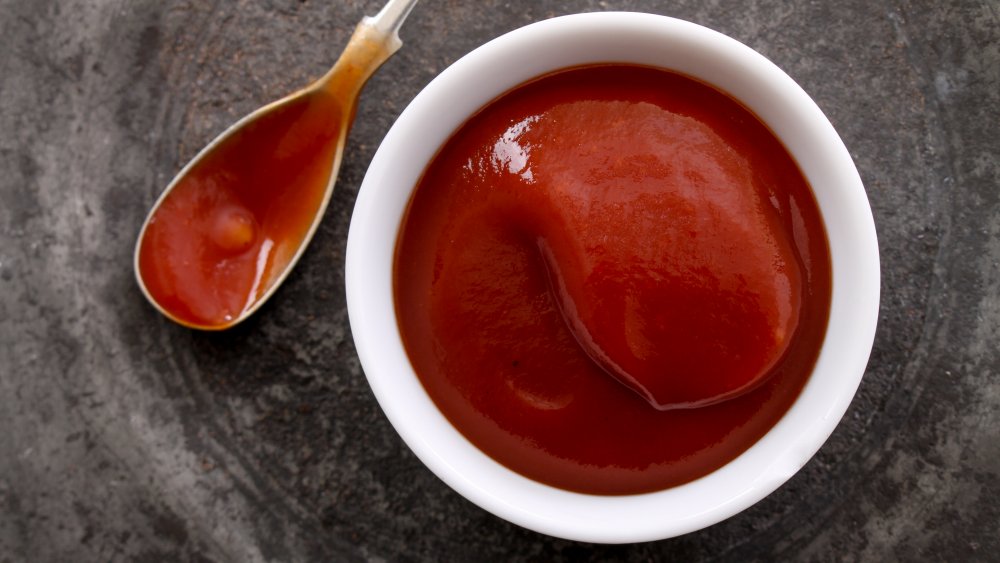The Strange Ingredient That Used To Be In Ketchup
In today's Heinz ketchup, there is nothing too adventurous on the ingredients list. Tomatoes, vinegar, corn syrup, salt, spices, and some onion powder clearly are not too out there (via Heinz). But ketchup was not always so innocuous. Believe it or not, ketchup used to include fish entrails, soybeans, and meat byproducts (via History Channel). Um, yum?
The word "ketchup" actually comes from the Southern Min dialect. The history of America's beloved condiment goes back thousands of years to southern China, but the predecessor to modern-day ketchup did not include any tomatoes. The first recorded use of a fermented sauce in the region was in the 300s B.C. Soybeans, meat products, and fish innards were used to create these ketchups, and they were called "ge-thcup" or "koe-cheup." Sound familiar?
Ketchup travels the world
Early non-tomato ketchups were popular among traders because they were easy to store on long ocean voyages. This helps account for the condiment being spread all over the world. From Southeast China, ketchup's predecessor made its way to Indonesia and the Philippines. From there, the English developed a taste for the sauces, and took them home to the British Isles.
The British took the concept of a fermented sauce, and started making ketchups out of everything from oysters, to mushrooms, to celery, to peaches.
It was not until 1812 that a ketchup with tomatoes was brought into existence. The recipe was invented by a Pennsylvania scientist named James Mease. Later, Heinz, which was already selling various condiments to a receptive American public, got in on the action and brought Heinz tomato-based ketchup to the market in 1876. This type of tomato-based ketchup became the standard ever since, and it is hard to imagine the sauce ever being made with anything else.

